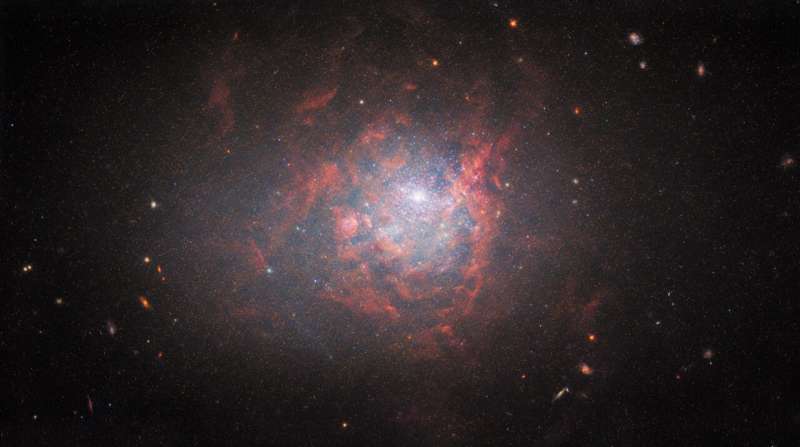Image: Hubble revisits a galactic oddball

The dwarf galaxy NGC 1705 featured in this image from the NASA/ESA Hubble Space Telescope lies in the southern constellation Pictor, approximately 17 million light-years from Earth. NGC 1705 is a cosmic oddball—it is small, irregularly shaped, and has recently undergone a spate of star formation known as a starburst.
Despite these eccentricities, NGC 1705 and other dwarf irregular galaxies like it can provide valuable insights into the overall evolution of galaxies. Dwarf irregular galaxies tend to contain few elements other than hydrogen or helium and are thought to be similar to the earliest galaxies that populated the universe.
The data shown in this image come from a series of observations designed to unveil the interplay between stars, star clusters, and ionized gas in nearby star-forming galaxies. By observing a specific wavelength of light known as H-alpha with Hubble's Wide Field Camera 3, astronomers aimed to discover thousands of emission nebulae—regions created when hot, young stars bathe the clouds of gas surrounding them in ultraviolet light, causing them to glow.
This is not the first time that Hubble has imaged NGC 1705. Astronomers peered into the heart of the galaxy in 1999 using Hubble's workhorse camera at the time, the Wide Field and Planetary Camera 2. This instrument was replaced with the Wide Field Camera 3 during the fifth and final space shuttle mission to Hubble in 2009, and the newer instrument has provided a richer and far more detailed portrait of NGC 1705 than the 1999 observation.
Provided by NASA's Goddard Space Flight Center





















